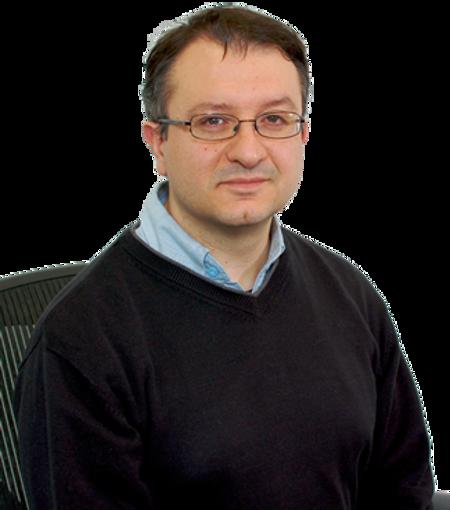Carlo Piermarocchi
Professor, Department of Physics & Astronomy
Location: 4263 Biomed Phys Sci
Phone: 517-884-5631
Email: piermaro@msu.edu
Bio
Semiconductor materials and nano-systems can be controlled at the quantum level using lasers. Our approach directly focuses on designing optical devices with a functional role in memories, information processors, or network components. In particular, we work on spins in quantum dots and diluted impurities, exploring theoretically how they can be controlled at the quantum level using a laser field. We study optically-induced spin coupling mechanisms that can be applied to the realization of quantum logic gates in quantum computing architectures. These mechanisms can be used to induce ferromagnetic transitions in magnetic semiconductors, and may lead to new non-dissipative and reversible methods of computation and data storage, based on light. # Exciton and Polariton Optics We are interested in the properties and the dynamics of optical excitations in semiconductors (excitons) in confined and/or periodic nanostructures, such as quantum wells, quantum wires, or arrays of quantum dots. Cavity polaritons are states resulting from the strong coupling of excitons with photons in an electromagnetic cavity. Both excitons and cavity polaritons are candidate for the realization Bose Einstein condensates in semiconductors. We are interested in studying how excitons and polaritons interact with phonons and how their radiative energy transfer and phonon dissipation can be controlled in different nanostructures. A fundamental understanding of exciton energy transfer could lead to innovative device architectures able to control more efficiently the flow of energy, enhance light extraction/collection, and minimize thermal and radiative losses. # Signaling in Complex Biological Networks We work on the control theory of signaling networks in cells based on concepts from statistical physics and information theory. In a cell, the flow of information is regulated by many different processes such as transcription and its regulation by transcription factors, molecular modifications, change in concentration of substances, as well as stimuli such as heat or light. This complex behavior is described by signal transduction networks in which nodes are typically proteins or other agents, and edges denote inhibition or stimulation. Statistical physics and information theory ideas including entropy, frustration, metastability and non-equilibrium processes are common to spin systems and to signaling biological networks. For example, spin glasses are characterized by the competition of ferromagnetic and anti-ferromagnetic interactions, leading to frustration and to the emergence of different macroscopic phases. Similarly, the competition between inhibition and stimulation in complex signaling networks can lead to glassy behavior, which in biology is linked to robustness and evolvability # Education * 1998: Ph.D. in Theoretical Physics, Swiss Federal Institute of Technology (EPFL), Lausanne * 1994: Laurea Degree in Physics summa cum laude, University of Pisa
Courses
- PHY 800: Research Methods
- PHY 899: Master's Thesis Research
- PHY 905: Special Problems
- PHY 999: Doctoral Dissertation Research
Selected Publications
- C. Piermarocchi, Materials spectroscopy: What would Schrödinger's cat see?, Nature Physics 7, 746 (2011).
- D. Calzolari, G. Paternostro, P. L. Harrington Jr. , C. Piermarocchi, and P. M. Duxbury, Selective control of the apoptosis network in heterogeneous cell populations, PLoS ONE 2(6): e547, (2007).
- G. Quinteiro Rosen, J. Fernandez-Rossier, and C. Piermarocchi, Long-range spin-qubit interaction mediated by microcavity polaritons, Phys. Rev. Lett. 97, 097401 (2006).
- J. D. Feala, J. Cortes, P. M. Duxbury, A. D. McCulloch, C. Piermarocchi, and G. Paternostro, Statistical Properties and Robustness of Biological Controller-Target Networks. PLoS ONE 7, e29374 (2012).
- M. D. Kapetanakis, I. E. Perakis, K. J. Wickey, C. Piermarocchi, and J. Wang, Femtosecond coherent control of spins in (Ga,Mn)As ferromagnetic semiconductors using light, Phys. Rev. Lett. 103, 047404 (2009).
- M. J. A. Schuetz, M. G. Moore, and C. Piermarocchi, Trionic Optical Potential for Electrons in Semiconductors, Nature Physics 6, 919 (2010).
- Yu. Gladush Yu, C. Piermarocchi, and V. Agranovich, Dynamics of excitons and free carriers in hybrid organic-inorganic quantum well structures, Phys. Rev. B 84, 205312 (2011).
